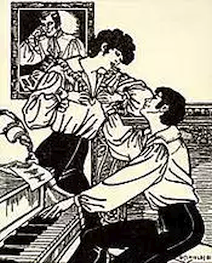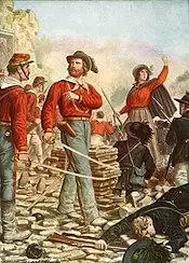blouse
A blouse is a loose-fitting upper garment that was worn by workmen, peasants, artists, women, and children. It is typically gathered at the waist or hips (by tight hem, pleats, parter, or belt) so that it hangs loosely ("blouses") over the wearer's body. Today, the word most commonly refers to a girl's or woman's dress shirt. It can also refer to a man's shirt if it is a loose-fitting style (e.g. poet shirts and Cossack shirts), though it rarely is. Traditionally, the term has been used to refer to a shirt which blouses out or has an unmistakably feminine appearance. The term is also used for some men's military uniform jackets. 衬衫是工人、农民、艺术家、妇女和儿童穿的宽松上装。它通常聚集在腰部或臀部(通过紧下摆、褶皱、花边或腰带),以便松散地悬挂在穿着者身上(“衬衫”)。今天,这个词最常指的是女孩或女人的衬衫。如果是宽松的款式(例如诗人衬衫和哥萨克衬衫),它也可以指男士衬衫,但很少指。传统上,这个词被用来指的是一件衬衫,它穿起来很暴露女性的外表。这个词也用于一些男性军装夹克。
Blouse is a loanword from French to English. Originally referring to the blue blouse worn by French workmen, the term "blouse" began to be applied to the various smocks and tunics worn by English farm labourers. In 1870, blouse was first referenced as being "for a young lady." 衬衫是从法语到英语的外来词。最初指的是法国工人穿的蓝色上衣,“上衣”一词开始用于英国农场工人穿的各种工作服和束腰外衣。1870年,衬衫首次被称为“适合年轻女士”。







 浙公网安备 33010602011771号
浙公网安备 33010602011771号